Table of Content
The upcoming months and possibly years will present some of the biggest HR challenges we have ever faced. A large part of overcoming these challenges is identifying the major HR trends, analyzing their importance, and anticipating the changes they might bring, which is exactly what this study is about.
Follow us into a somewhat gloomy, highly uncertain yet still unbelievably exciting “soon-to-become-present” future of human resources in the post-COVID-19 world. Our study will be helpful not only to HR managers but also to anyone who runs a business with more than 1 employee.
If you are looking to optimize your company’s performance and improve internal communications,
create your free Bitrix24 account and start getting results today!
Learning to Work… Again
As the lockdown restrictions are slowly being eased across the globe and companies returning to work, the smoke has finally cleared leaving us with more challenges than ever. Everyone realizes that the rules of the game have changed and we have to act differently but very few can pinpoint exactly how.
As many businesses are getting ready to reopen, they are faced with a difficult, multi-level task of:
- Staging a proper return to work
- Identifying and leveraging the successful practices and advancements they made during the lockdown
- Charting a new path
The sudden switch to working from home proved to be quite challenging for many companies and didn’t sit well with a lot of workers as they struggled to find that “life-work” balance and adapt to the new reality. This chart below courtesy of
Visual Capitalist shows the main struggles of remote workers during the lockdown.
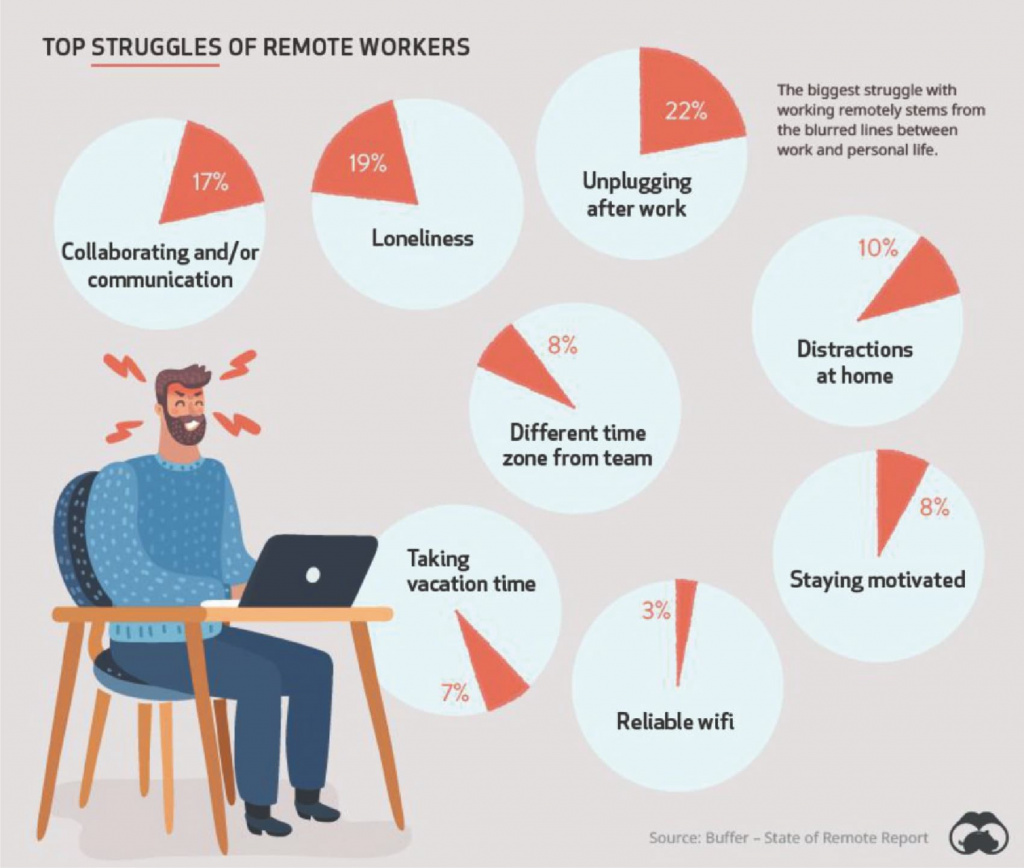
Now it’s all the same in reverse - just as everyone got more or less used to the new routine, it’s time to change it up again. Although challenging on the surface, this situation actually presents a unique opportunity for a fresh start - leave behind what wasn’t quite working, use what you have learned during the lockdown, and introduce some new things.
Not all hope is lost - in fact, a lot of companies see more opportunities than downsides in the current COVID-19 crisis, according to a
Forbes report on the impact of the lockdown on human resources management.
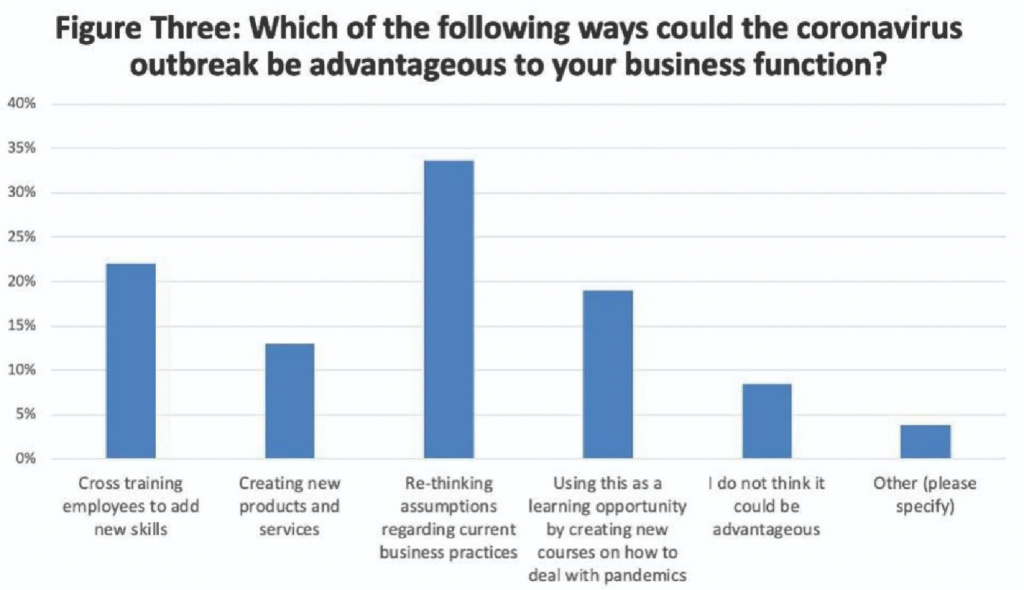
The opportunities are out there waiting but before we start talking about seizing them, we need to identify the current HR trends and what they mean to an average business.
Main Post-COVID-19 HR Trends
Analyzed and gathered through multiple sources, these trends are in no way our prediction for the future. They have mostly come out as results of and reactions to the global changes we are currently experiencing. Evaluate these trends thoroughly to determine if they can be applied to your business.
Increase in Remote Work
This one was hard not to notice. According to a
Gartner analysis, 48% of currently employed people will likely work remotely at least part of their time even after all the lockdown restrictions are lifted. Moreover, 74% of CFOs are actually planning to
increase remote work in their organizations after the pandemic is over. Shockingly enough, two-thirds of knowledge workers in the US
believe that offices will simply disappear as a concept by 2030.
Over the last five years, remote work in the world has grown 44% (and that’s not counting 2020 which has certainly contributed to that number). Whether we like it or not, remote work is the future, and people seem to like having that opportunity. Why? Well, different age groups have their own preferences - see the chart below courtesy of
MerchantSavvy (2020 Q1 data).

Either way, people around the world seem to have appreciated the perks of remote work even more during the lockdown and will expect “remote work” as an option from their future (and current) jobs. In fact, most of them will even view it as a key factor, according to the same survey by MerchantSavvy.
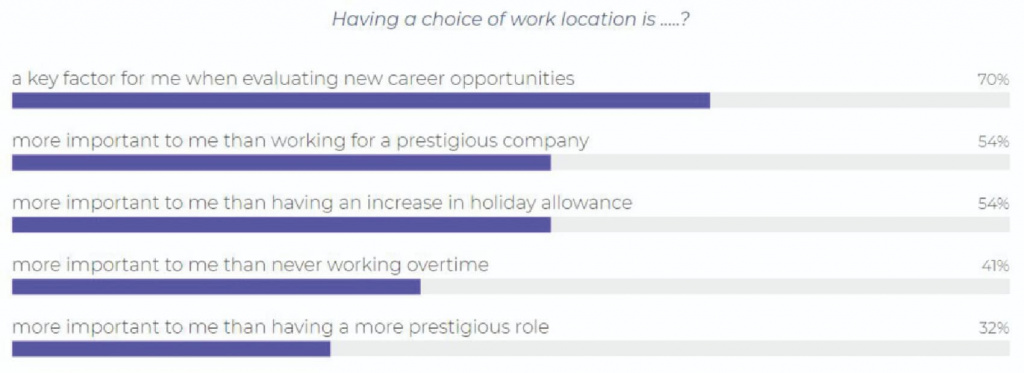
This will require an additional effort on the companies’ part as they will have to provide all the necessary conditions for their remote workers. If the current statistics have revealed anything, it’s that people, in general, have embraced the idea of remote work and are even willing to accept a job offer without visiting the physical location of a company - see the results of a survey among tech workers done by HIRED in April 2020.
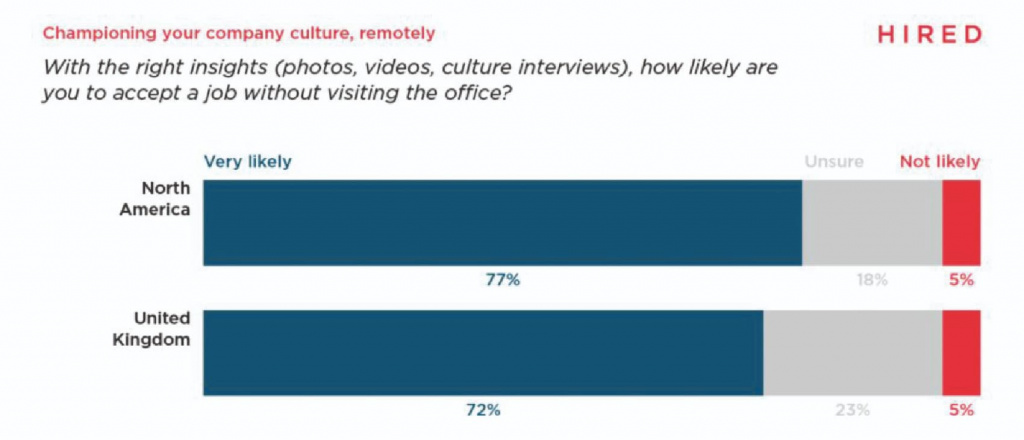
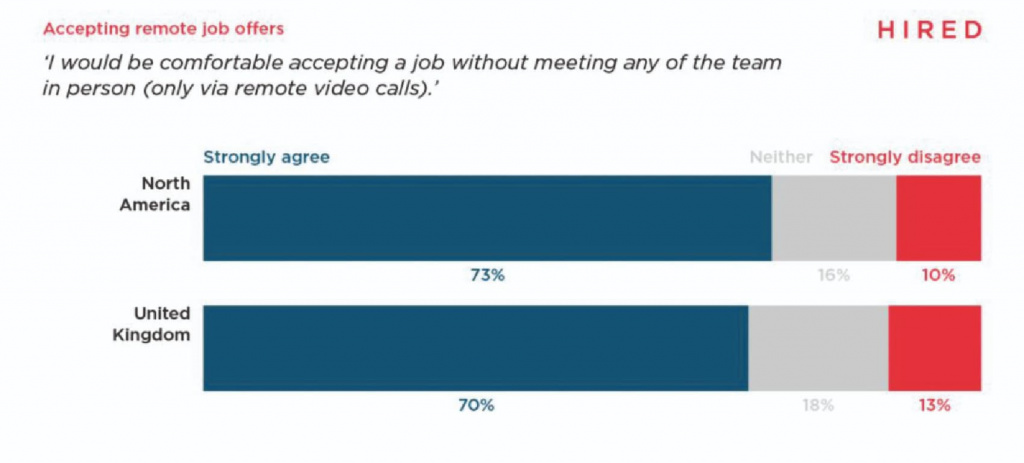
Expanded Data Collection
Employee data and how to go about it without violating anyone’s privacy has always been a tricky question for HR managers. Since the start of the COVID-19 pandemic and massive switch to remote work, companies have become even more dependent on tracking their employees.
According to a recent
Gartner survey, 16% of companies in the US are passively tracking their employees using methods like virtual clocking in and out, tracking work computer usage, and monitoring employee emails or internal communications/chat.
While these passive tracking methods prove really useful and help companies to increase their productivity, the management has to walk a thin line between just monitoring and blatant spying as most people don’t like being monitored at all.
Although it might seem a little far-fetched now, there is another sub-trend slowly building here - tracking your employees’ health. You can already get heart rate, body temperature, and some other vital metrics via modern apps - with the health awareness trend still on the rise even past the peak of the pandemic, tracking these metrics will be a smart decision allowing you to react quickly if someone gets sick and provide your employees with additional care.
Now that we have all these tracking tools, HR managers should be extremely cautious about the ethics of using employee data. Employee monitoring can only be used to understand your staff engagement and get more insights on how to increase their productivity.
Employer as Social Safety Net
A fact that rarely crosses anyone’s mind: most people spend more time at work than at home (if you include time to commute). Starting with the rise of IT companies in the 2000s, our concept of “office” as a place with a cold atmosphere and hostile environment where you have to spend 8 hours every day Monday to Friday has been changing.
More and more employers took an active stance on providing their employees with all the necessary amenities in order to make them feel like home while still being in the office. Workers took a liking to that and began demanding more, thus raising their expectations from the current and future employers.
The COVID-19 crisis has once again shown how important these family-like relations are as many employers expanded their involvement in the lives of their employees by:
- Increasing mental health support and offering free therapy hours
- Expanding healthcare coverage
- Providing financial health support during and even after the pandemic
- Offering compensations for employees who have been furloughed and/or laid off
Actually, there are plenty more things you could do for your workers in order to maintain their well-being and productivity. Here’s a chart courtesy of
Josh Bersin Academy showing the most popular measures undertaken by companies in the US to assist their employees in dealing with the COVID-19 crisis.
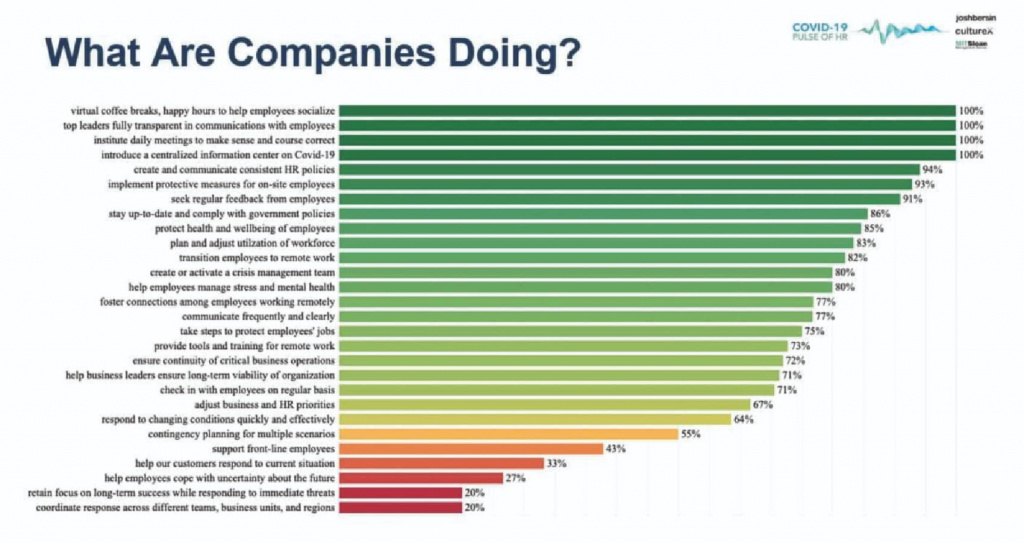
A lot of workers are under stress now due to the uncertainty brought by the crisis - helping them deal with that stress might prove very useful for both employees and employers.
Forbes compiled a list of top 10 ways organizations are dealing with increased anxiety during the coronavirus pandemic.
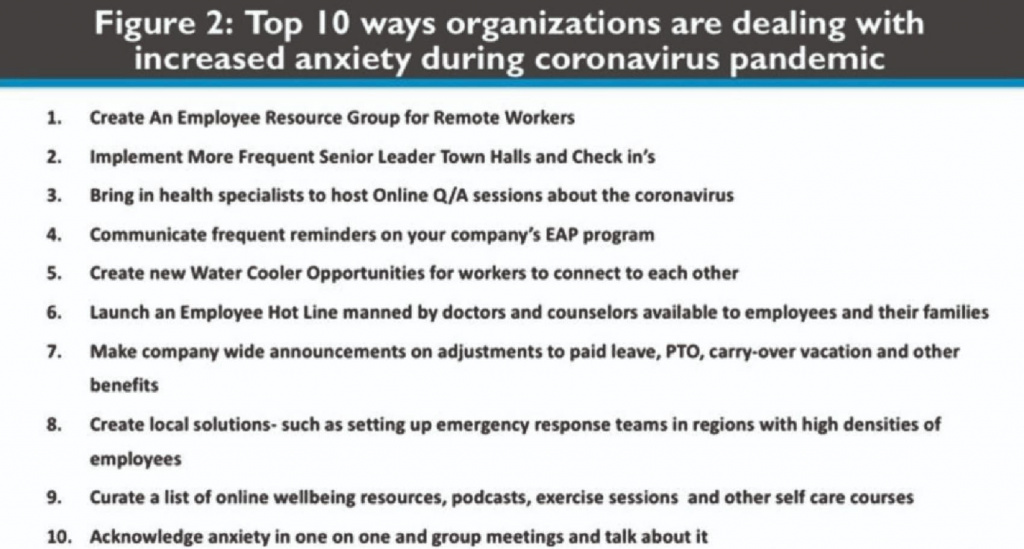
Personalization
The “one-size-fits-all” HR strategy many companies have been using for years will simply not work anymore. Teams are becoming increasingly diverse, the environment keeps changing at a faster pace, online collaboration tools are developing quickly - these factors
push employers to move to a more personalized approach to their employees where individual needs, wishes, and skills are at the core.
Identifying what’s best for a particular employee and addressing their needs (whether it’s the desire to work from home, have a flexible schedule, or work on a particular team) will be the key to surviving in the post-COVID-19 economy.
Humanization/Dehumanization
With the increasing number of remote workers and teams, many companies are facing an interesting challenge: their employees are losing human touch, becoming strictly task-oriented. Not being able to meet their teammates in person anymore, these people have begun to lose motivation and productivity.
In fact, this data courtesy of
Finances Online shows that loneliness and need to collaborate are the two biggest struggles of remote workers in 2020.
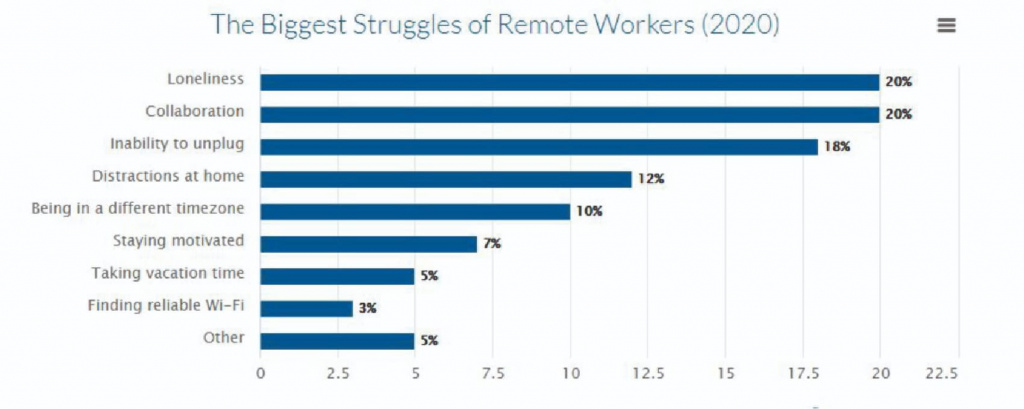
Another interesting point here is that almost a quarter of telecommuters now are concerned that their manager may not be able to see the full extent of their contributions due to not working together in the office (see the full breakdown below, taken from the HIRED 2020 State of Remote Work
report).
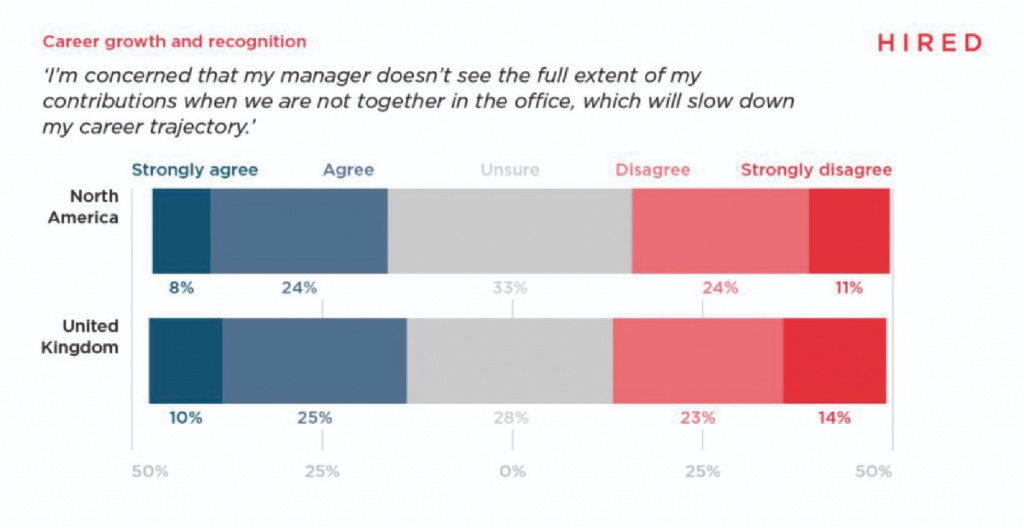
Obviously, when it comes to having difficult conversations or raising tough questions, videoconferencing or chats are no way to go as 20% of remote workers agree that they would prefer to do that in person.
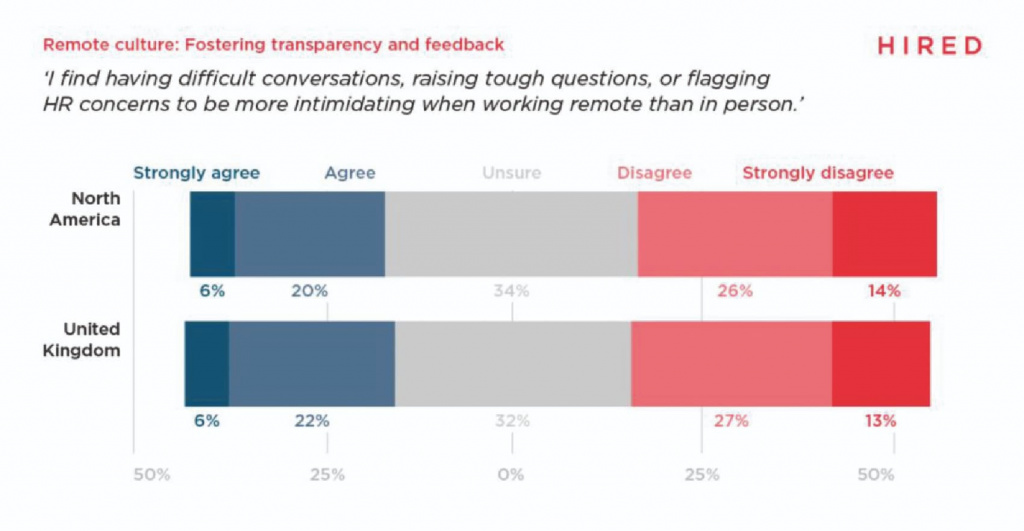
Overall, it seems like a large part of remote workers find it difficult to build rapport and collaboration through online communications only. This might be partly due to the fact that some of those currently working remotely had never had such experience before the lockdown, which is why they are struggling with it now. Still, that’s what people said.
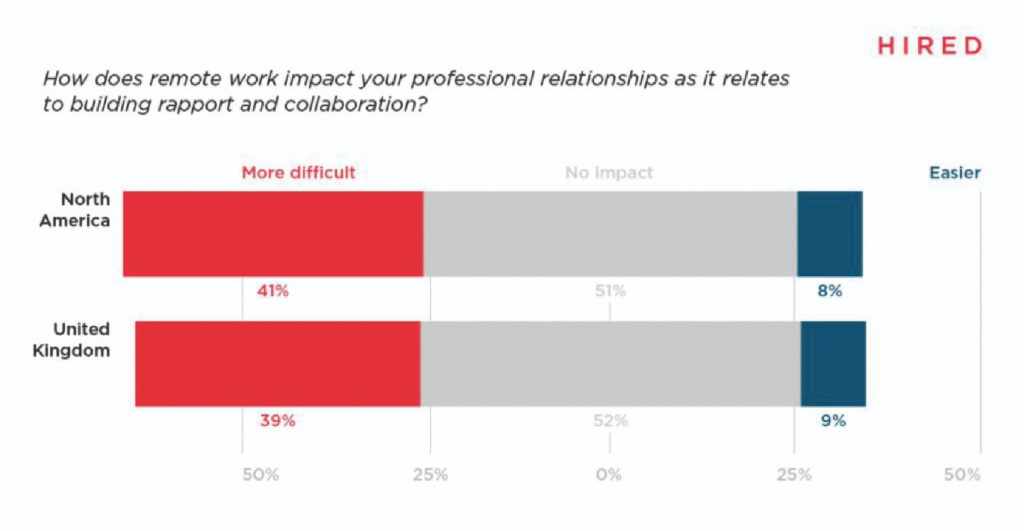
Addressing all of these important issues is crucial for any company that wants to continue having remote workers among its staff. They will have to learn how to engage everyone (even the task-oriented workers) in the team culture and “humanize” them.
Maintaining a Healthy Work Environment
For those employees who do want to keep working in the office, you will have to make sure your practices are in line with the recommendations from your local health authorities. With coronavirus still on the loose, no one can be too safe.
This will probably require you to:
- Train your employees to observe basic hygiene rules (washing hands with soap and water for 20 seconds, etc.) and respiratory etiquette (coughing, sneezing)
- Re-arranging your office setup to meet social distancing norms
- Perform routine environmental cleaning and disinfection
- Provide no-touch receptacles and hand sanitizer

Some companies are also ensuring their employees take their temperature at work twice during the day (usually in the morning and late in the afternoon) to eliminate the risk of spreading the virus among the team.
Capabilities Over Skills
Developing capabilities you need to do your job instead of developing just new skills was a major trend before the pandemic, and now its importance has increased significantly. According to an HR guru Josh Bersin (via
Forbes), “the rise of capabilities over skills” we are experiencing now is a major factor that will influence HR for years to come.
If one major crisis like the COVID-19 pandemic can render certain skills useless overnight, both management and workers should change the way they go about learning. This new focus on capabilities brings learning out to the employee on the job and in the field. You can develop new capabilities by providing shorter, well-structured microlearning courses available anytime, anywhere - from any device.
The graphic below courtesy of
ELearning shows the evolution of corporate training methods and how we got to where we are now.
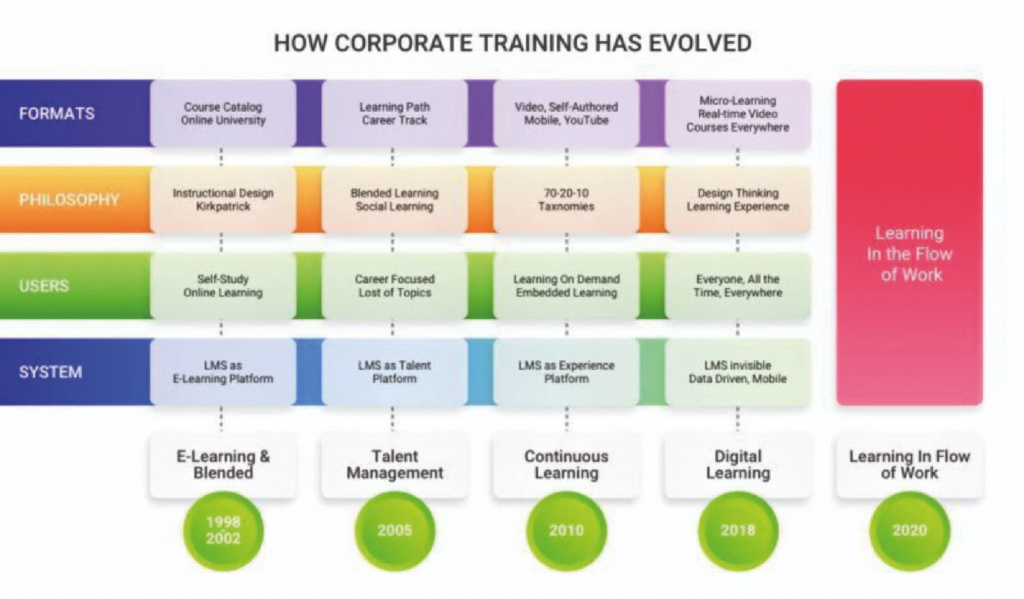
Times when people learned a set of skills that guaranteed them a 30-year career in a certain field are long gone as skills we learn at university or college become obsolete by the time we graduate. Traditional employment is
shunned in favor of the gig economy - in fact, over 40% of Americans will be independent contractors by the end of 2020, according to an
Intuit report. Whole industries are fading into obscurity while new ones are emerging.
With the recent boom of online learning, there couldn’t be a better moment for these two trends to intertwine. Training your employees new capabilities via online platforms will be the key to the success of your business and its overall competitiveness.
Conclusion
We have been able to identify seven major HR trends that will shape the industry at least in the second half of 2020 and possibly into 2021. These trends are:
- Increase in remote work
-
Expanded data collection and passive remote employee tracking
-
The increasing role of the employer as a social safety net
-
More personalized approach to each employee of the company
-
Dehumanization of remote workers
-
Maintaining a healthy work environment
-
Capabilities over skills
Being aware of these trends allows you to determine which ones can be applied to your company and therefore act upon them. Forewarned is forearmed, as they say. The world is changing faster than any of us could have ever imagined and the only winning strategy is to be flexible enough to change along with it.
This somewhat controversial idea is a nice reflection of the era we’re living in - perhaps, best
described by a New York Times columnist Thomas Friedman in his concept of “dynamic stability.” Instead of desperately trying to find one model that will work for them forever, businesses should adopt a new form of behavior that will allow them to quickly react to the ever-changing environment and change along with it.
To assist you in making your company more prepared for the challenges to come, we developed a tool that’s one hundred percent 2020-ready - Bitrix24. It is an online collaboration platform packing a wide arsenal of remote work tools including tasks, project management, chat, videoconferencing, and more.
If you are looking to optimize your company’s performance and improve internal communications,
create your free Bitrix24 account today!


















